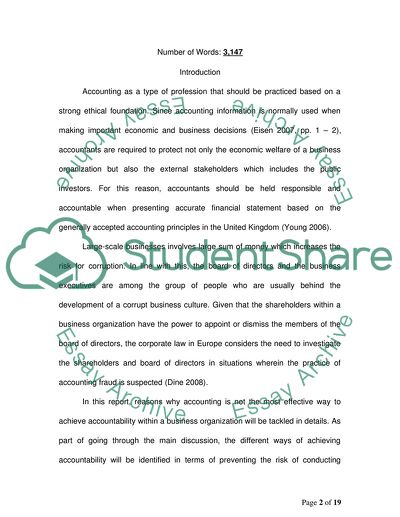Cite this document
(The Most Effective Means of Achieving Accountability in Organizations Book Report/Review, n.d.)
The Most Effective Means of Achieving Accountability in Organizations Book Report/Review. Retrieved from https://studentshare.org/finance-accounting/1747351-is-accounting-the-most-effective-means-of-achieving-accountability-in-organizations
The Most Effective Means of Achieving Accountability in Organizations Book Report/Review. Retrieved from https://studentshare.org/finance-accounting/1747351-is-accounting-the-most-effective-means-of-achieving-accountability-in-organizations
(The Most Effective Means of Achieving Accountability in Organizations Book Report/Review)
The Most Effective Means of Achieving Accountability in Organizations Book Report/Review. https://studentshare.org/finance-accounting/1747351-is-accounting-the-most-effective-means-of-achieving-accountability-in-organizations.
The Most Effective Means of Achieving Accountability in Organizations Book Report/Review. https://studentshare.org/finance-accounting/1747351-is-accounting-the-most-effective-means-of-achieving-accountability-in-organizations.
“The Most Effective Means of Achieving Accountability in Organizations Book Report/Review”, n.d. https://studentshare.org/finance-accounting/1747351-is-accounting-the-most-effective-means-of-achieving-accountability-in-organizations.


